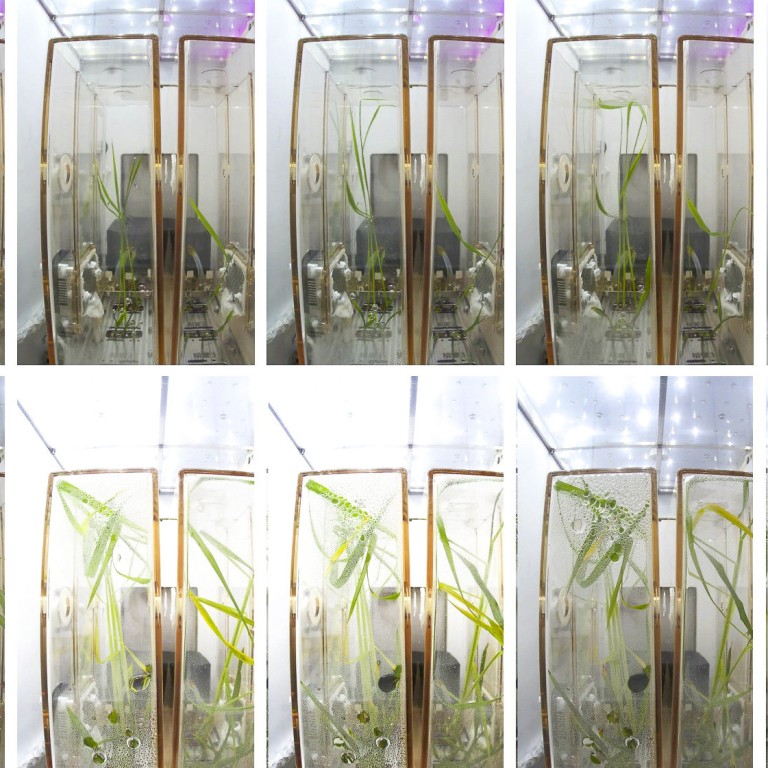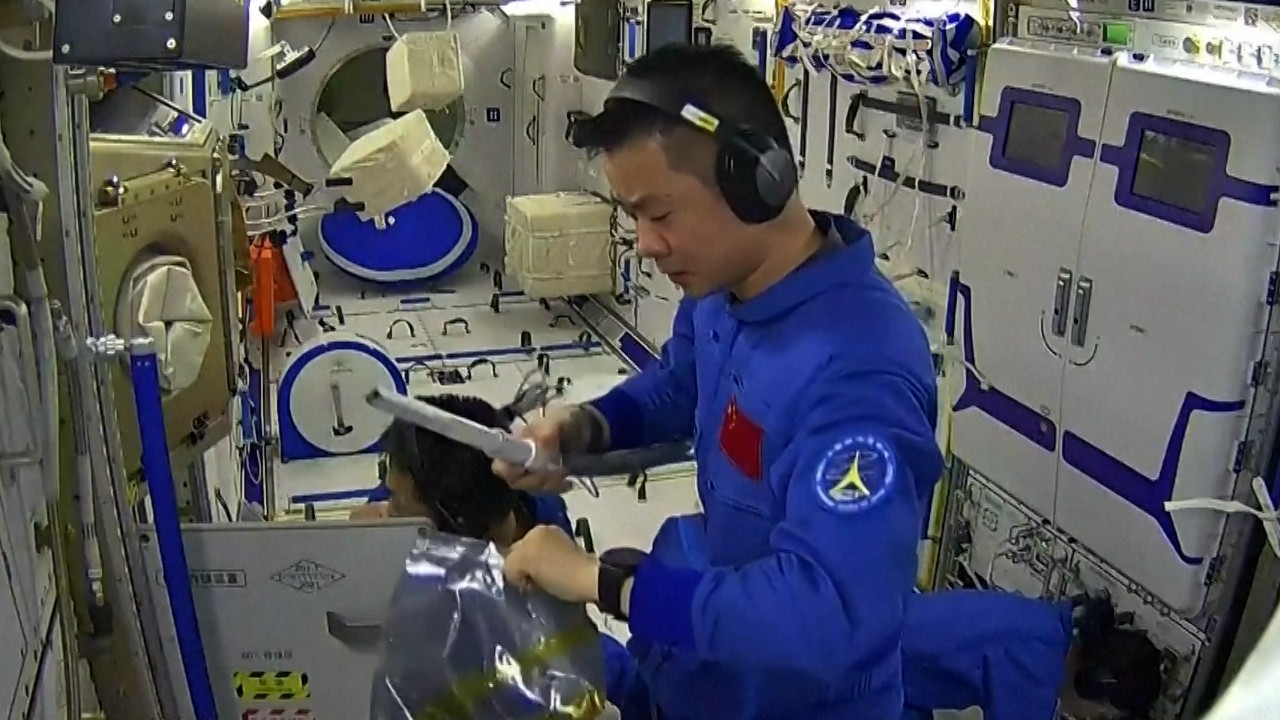
The Chinese space experiment to help astronauts grow food in low gravity
- One month after launch, plants on the Tiangong’s lab module are thriving, according to the Chinese Academy of Sciences
- If the crew’s rice harvest is successful, it will be the first time for the grain to survive ‘from seed to seed’ under microgravity, scientist says
A photo from Monday shows Arabidopsis thaliana plants, also known as thale cress, on the space station have sprouted leaves while long-grain rice plants have reached a height of about 30cm (11.8 inches).
Lift-off for China’s space lab module in a first for manned station
For more than two decades, Zheng’s research team has studied how changes in gravity affect plant growth. They conducted a series of experiments on the Shenzhou 4, Shenzhou 8 and Tiangong-2 missions.
Zheng was also involved in a previous life cycle experiment in 2016 in which Chinese researchers successfully harvested seeds from thale cress grown in space.
A big challenge lies in the environment. Plants must be shielded from the vacuum conditions and cosmic radiation of space, and there is limited room and energy supply for cultivation on the space station.
As a result, space crops must have high yields, grow quickly and consume minimal energy, according to Zheng’s team.
“Only a few crops like rapeseed, wheat, and peas have successfully produced seeds in space in experiments,” Zheng said.
Challenges to plant growth in space include delayed flowering, reduced seed quality and lower seed setting rates.
On Earth, a longer period of sunlight accelerates flowering in thale cress, but Zheng’s team found that long periods of light failed to accelerate blooming under microgravity.
Tianzhou 4 readies for mission to help build China’s space station
Thale cress belongs to a big family of vegetables, including bok choy and rapeseed, while rice is similar to other grain crops, such as wheat and corn. Research on the two plants may lead to broader solutions to the challenges of growing plants in space.
“This experiment in the Wentian lab module will focus on how microgravity affects bloom and how researchers can control the bloom cycle under microgravity,” Zheng said.
“Hopefully, the experiment will provide theoretical guidance for space grain production.”



